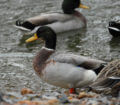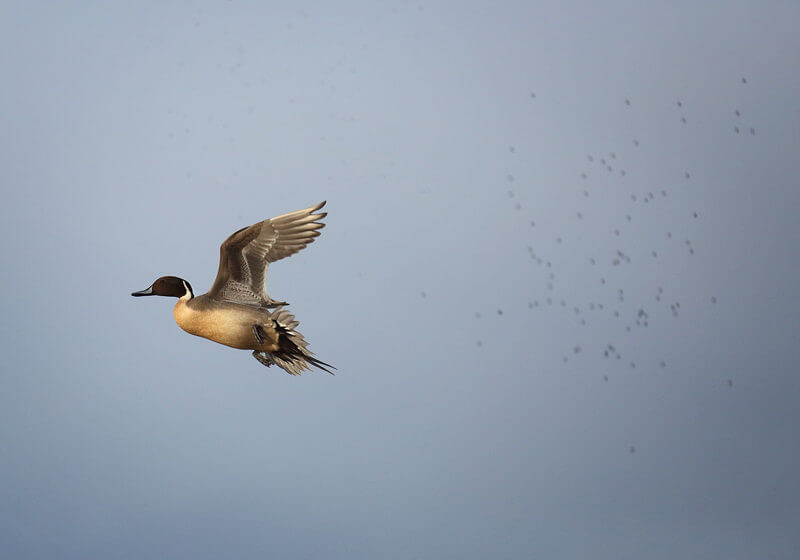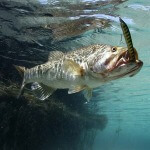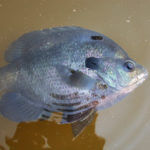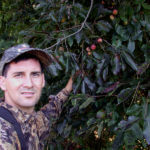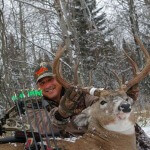Editor’s Note: There are several tactics you can use to stalk hunt ducks successfully.
When the ducks jump, you have to shoot. Within an instant, the birds will fly through the timber and out of sight. Three tips have aided me when jump-shooting ducks:
 * Make sure your cheek is on the stock before you shoot. Although this information may sound elementary, when ducks come up off the water, hunters’ heads naturally come up off their stocks. I’ve missed many a feathered phantom by forgetting to bring the gun and my head up together at the same time. Only by constantly reminding myself to do so can I stay on the stock.
* Make sure your cheek is on the stock before you shoot. Although this information may sound elementary, when ducks come up off the water, hunters’ heads naturally come up off their stocks. I’ve missed many a feathered phantom by forgetting to bring the gun and my head up together at the same time. Only by constantly reminding myself to do so can I stay on the stock.
* Shoot above the birds when jump shooting. The birds get up so quickly. When close, you may believe that putting the bead dead on the bird will cause it to fall. Sometimes it may. But more often than not, you’ll shoot under the duck. Remember that when the duck takes off, you want your shot pattern above the bird. Then the duck will jump into the pattern rather than away from it, and you’ll bag more birds. Once again, I try to tell myself to aim above before I round a bend where I know the ducks may sit. Think through the shot before you have it presented to you.
* Don’t shoot too quickly, perhaps the most-common mistake sportsmen make when learning to stalk ducks. Jump shooting does require a quick mounting of the gun and a speedy squeeze of the trigger. But often a hunter fails to quickly see and pick up on a target to lead and at which to fire. The same problem exists for novice quail hunters when they see their first few coveys. When the birds get up, the hunters fire among them hoping to hit one. Stalk-hunting ducks can amplify this problem. Hunters may spend an hour or more getting into position for their shots. With nerves on edge and muscles tight, they realize they have to perform at any moment. When the birds flush, the hunters try and get off as many shots as possible before the quacks fly out of range.
But instead of using this tactic, take a deep breath just prior to the moment of truth. Tell yourself, “I have time to see the duck. I want to shoot, aim and fire before the bird gets away. After the duck falls, I’ll look for my next target.” By getting the first duck, you take the pressure off trying to down the second one. By chance or skill, if you drop two or three ducks jump shooting, you really have reason to brag.
 I stalk-hunt ducks because I enjoy the role of the hunter – being quiet, patient and cautious enough to get close to waterfowl by wading or boating to take a shot. I’ve found the ability to stalk an intricate skill that you can apply to small and large game as well as waterfowl. I consider the stalk the ultimate challenge. Stalking waterfowl requires calculated movement with a large variety of possibilities and involves a step back in history when buckskin hunters depended more on their woodsmanship and stalking abilities to get in close enough for a sure shot than they did on the velocity of their lead to bring down ducks.
I stalk-hunt ducks because I enjoy the role of the hunter – being quiet, patient and cautious enough to get close to waterfowl by wading or boating to take a shot. I’ve found the ability to stalk an intricate skill that you can apply to small and large game as well as waterfowl. I consider the stalk the ultimate challenge. Stalking waterfowl requires calculated movement with a large variety of possibilities and involves a step back in history when buckskin hunters depended more on their woodsmanship and stalking abilities to get in close enough for a sure shot than they did on the velocity of their lead to bring down ducks.
To learn more about John E. Phillips’ Kindle, print and Audible outdoor books, go to www.amazon.com/John-E.-Phillips/e/B001HP7K6O. Or, visit Nook Books at www.barnesandnoble.com.
You can download free books by going to https://johninthewild.com/free-books.

